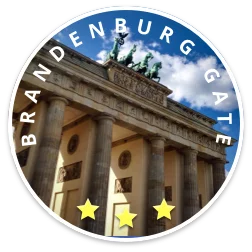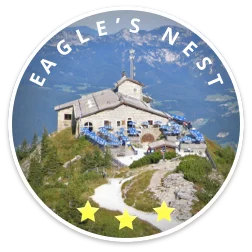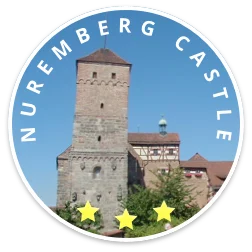Destination List > Thingstätte
Thingstätte
Photo by Travelinho
The history...
High above Heidelberg, nestled in the forested slopes of the Heiligenberg, lies a massive stone amphitheater with a complex past. The Heidelberg Thingstätte, built in 1935, was part of the Nazi regime's attempt to create open-air theaters for propaganda events. Despite its origins, today it stands as a monument to history, nature, and the resilience of cultural memory.
The amphitheater was designed by architect Hermann Alker and constructed using local red sandstone. It features 56 rows of seating that slope down 25 meters, accommodating up to 20,000 spectators. The site was inaugurated by Propaganda Minister Joseph Goebbels on June 22, 1935, who envisioned it as a "true church of the empire."
The Thingstätte was part of the "Thingspiel" movement, which aimed to revive ancient Germanic traditions of communal gatherings. However, the movement quickly lost favor, and the amphitheater saw limited use during the Nazi era.
After World War II, the Thingstätte fell into disuse but found new life as a venue for cultural events. In the decades following the war, it hosted concerts, theater performances, and even Easter sunrise services organized by American forces.
From the late 1980s until 2017, the amphitheater became the focal point of annual Walpurgis Night celebrations on April 30th. These unofficial gatherings attracted up to 15,000 people who enjoyed fire-dancing, music, and communal festivities. However, due to safety concerns, including a forest fire in 2017, the city of Heidelberg banned these events starting in 2018.
Today, the Thingstätte is a protected cultural monument and a popular destination for hikers and history enthusiasts. The site offers panoramic views of Heidelberg and the Neckar River, and its acoustics are so precise that a speaker's voice can be heard clearly from the stage to the top rows without amplification.
Visitors can explore the surrounding Heiligenberg area, which is rich in history. Nearby attractions include the ruins of the Monastery of St. Michael, built in 1023, and the Heidenloch, a mysterious 55-meter-deep pit of unknown origin.
Sources: Wikipedia, Heidelberg Guide















